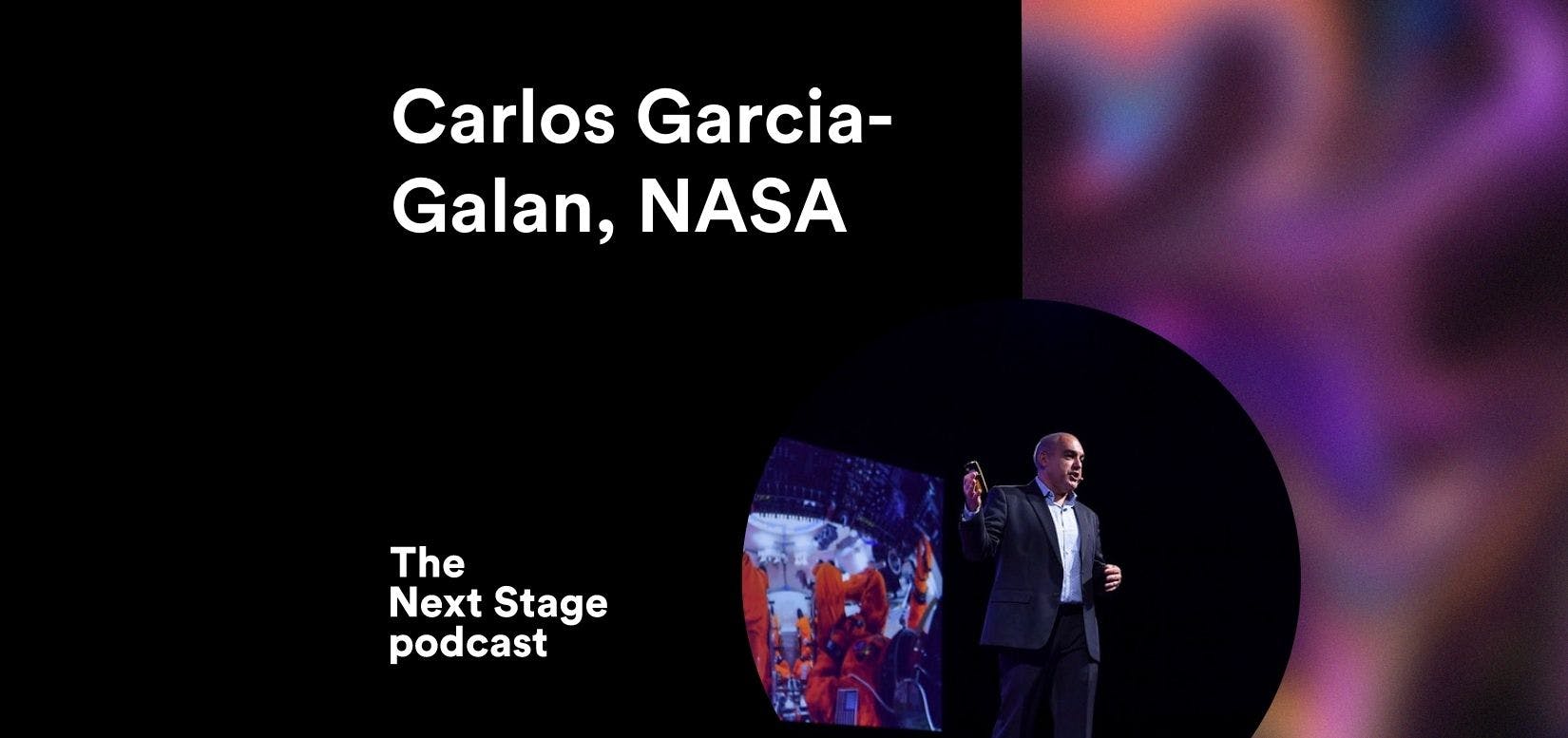
Podcast: NASA’s plan to return to the moon

Carlos Garcia-Galan is the head of European Service Module (ESM) Integration at NASA, specifically working with the Orion spacecraft in the Artemis programme.
He reminds us that it has been 49 years since a person landed on the moon. “It’s been a long time but it’s time to get back,” says Carlos.
Why the moon and why now? It is a great proving ground, says Carlos, explaining that the establishment of safe human travel to the moon is the first step to sending them to Mars.
Next stop, Mars
The Mars rover had to travel almost 100 million miles to go to the red planet and then took a poignant picture of earth, nothing more than a twinkling star in the Martain night sky. “We’re working towards enabling a human to take this picture next time,” he says.
This is what the Artemis I mission is working towards.
“What we’re going to do with the Artemis I mission is to test the whole system and crew. We’re going to send the spacecraft to orbit the moon. It’s going to be a 26 to 42 day mission. We’re going to test all the systems from the rocket to Orion to the re-entry systems prior to actually putting a crew back on it and going back to the moon.”
European Service Modules 1, 2, 3… An overview of the European Service Modules and #Artemis for 2021, and what's to come this year. 🚀🌔 #ForwardToTheMoon! https://t.co/Y9IBoHh7or pic.twitter.com/qS3gVnnI5n
— Human Spaceflight (@esaspaceflight) January 26, 2022
The next mission is Artemis II and this will be the first time that NASA sends humans back to lunar space, to the orbit of the moon, since 1972.
“We’ll test the entire system with humans in it. That will be the last test flight before Artemis III in 2024 or thereabouts, when we’re going to send the next man and the first woman to set foot on the surface of the moon.”
Space is an unforgiving environment
For this phase, NASA is not only going to be building the SLS rocket and the Orion spacecraft but also the human landing system and for this it will be partnering with commercial companies.
“Space is a very unforgiving environment, so that’s why we have to test,” says Carlos, explaining why they had to set up speakers around the capsule and blast out noise many times louder than your average rock concert to ensure everything holds together during the acoustics of take-off.
Carlos Garcia-Galan was speaking on the DeepTech stage at Web Summit 2021. Here are some links to the images he mentions: the Orion spacecraft; a view of Earth from Mars as taken by NASA’s Curiosity rover.
Subscribe to 🎙️ The Next Stage 🎙️ wherever you get your podcasts, and download this episode or listen here right now.
Don’t miss out on more exciting speakers like Carlos Garcia-Galan. Sign up for our newsletter here.

